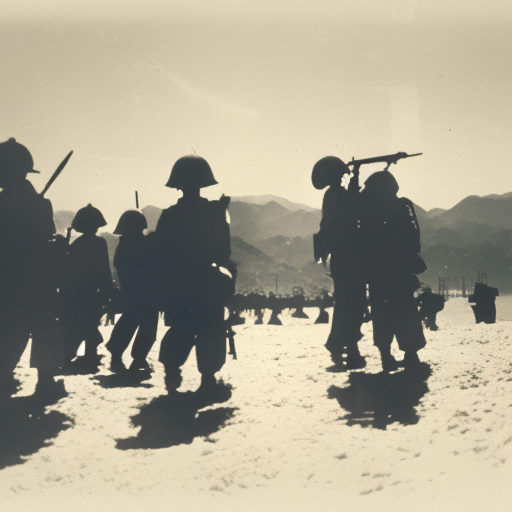Summary:
The Second Sino-Japanese War was a conflict that took place from 1937 to 1945 between China and Japan. It was a major theater of World War II and had a profound impact on the political and social landscape of East Asia. The war began with the Marco Polo Bridge Incident in July 1937 and ended with Japan’s surrender in August 1945. The conflict resulted in immense human suffering and extensive destruction in China, with estimates of millions of casualties.
Background:
The roots of the Second Sino-Japanese War can be traced back to Japan’s imperial ambitions and China’s internal struggles. Japan sought to expand its influence in East Asia and saw China as a valuable resource-rich territory. China, on the other hand, was grappling with political instability and the ongoing Chinese Civil War between the Nationalist government led by Chiang Kai-shek and the Communist Party led by Mao Zedong.
Conflict Escalation:
The conflict escalated rapidly after the Marco Polo Bridge Incident, where a clash between Chinese and Japanese troops near Beijing led to full-scale warfare. Japan quickly gained control over major cities and regions in China, including Shanghai and Nanjing. The fall of Nanjing in December 1937 resulted in the infamous Nanjing Massacre, where Japanese forces committed widespread atrocities against Chinese civilians and soldiers.
International Response:
The international community was divided in its response to the Second Sino-Japanese War. While some nations, such as the United States and the Soviet Union, provided limited support to China, others, like Britain and France, were hesitant to confront Japan due to their own geopolitical interests. The League of Nations condemned Japan’s aggression but failed to take effective action.
Chinese Resistance:
Despite being outmatched in terms of military strength and resources, China put up a determined resistance against Japanese forces. The Chinese Nationalist government, along with the Communist Party, formed a united front to fight against the Japanese invaders. The war saw the emergence of guerrilla warfare tactics and the use of unconventional strategies by Chinese forces.
Turning Point:
The turning point in the war came in 1941 with Japan’s attack on Pearl Harbor, which brought the United States into the conflict. The United States provided significant military and economic aid to China, including the famous “Flying Tigers” volunteer group. This aid, combined with the Soviet Union’s entry into the war in 1945, put immense pressure on Japan and eventually led to its surrender.
Legacy:
The Second Sino-Japanese War had far-reaching consequences for both China and Japan. China suffered immense human and material losses, with estimates of over 10 million civilian and military casualties. The war also exacerbated existing political tensions between the Nationalist government and the Communist Party, setting the stage for the Chinese Civil War that followed.
For Japan, the war marked a significant setback in its imperial ambitions and a turning point in its relationship with the international community. The war crimes committed by Japanese forces during the conflict continue to strain relations between Japan and its neighboring countries to this day.
Overall, the Second Sino-Japanese War was a brutal and protracted conflict that had a profound impact on the history of East Asia. It highlighted the resilience and determination of the Chinese people in the face of aggression and set the stage for the subsequent political and social transformations in the region.












